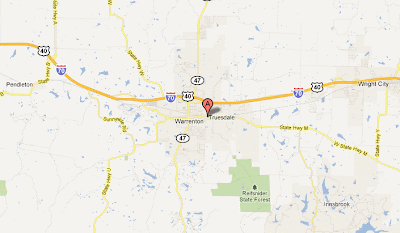Community and bike/ped advocates often ask their planning and municipal leaders for improvements like bicycle lanes. Yet many advocates may not realize that it’s just as important to ask for trees and greenery, too. John Regenbogen, executive director of Scenic Missouri, recently raised this important but often undervalued issue with the Livable Streets team.
Part of Scenic America, Scenic Missouri has been working since the 1990s on enhancing the aesthetic look of towns, communities and the state. From creating scenic byways to reducing billboard signage, Scenic Missouri has been leading the charge to keep the Show-Me state beautiful and more enjoyable for citizens and tourists. “We have a variety of ways we work with communities,” Regenbogen says, citing his organization’s work with communities who want to regulate cell phone towers to helping them develop community tree ordinances.
And while the economic downturn has affected many families and communities, there are still reasons to celebrate. Recalling earlier years of limited vision or commitment to improving the state’s aesthetics, he says, “People do like to bicycle and they do like to walk. Communities have been applying for transportation grants. There is a thirst for that from communities that hasn’t necessarily been public.”
To prove his point, Regenbogen describes a great example in the South Grand area of St. Louis. As part of the Great Streets Initiative, South Grand is a busy neighborhood in South St. Louis near Tower Grove Park. Four lanes of traffic cut through a business area of restaurants, shops and residences. When planners decided to make the area more livable by putting the road on a “road diet,” some were wary. The road diet would mean shaving inches off of the traffic lanes in order to widen sidewalks and create bicycle lanes.
 |
| Photo credit: Grand South Grand. Details at: SouthGrand.org |
But the road diet alone isn’t what’s just making South Grand a gem for businesses and local residents. It’s going to be the greenery. Regenbogen says that one of the key elements is greening the district with trees and other shrubbery. “For St. Louis summers, street trees can do a wonderful job of reducing the temperature. They reduce storm water runoff, and trees play that additional green role in the Livable Streets movement. It’s an emerging area now, [and there are] emerging data showing the value of urban trees in New York City.”
Moreover Regenbogen points out that all of these improvements come back to the local town and community. “People are starting to understand that when you can attract people to a destination, that it is attracting economic activity. Well-designed public spaces, including the streets, are important for that. That helps anchor commercial districts, and a lot of that is key in the execution. You don’t want an urban forest where you can’t see store fronts or addresses. Or have trees that aren’t drought tolerant. People are really starting to recognize that in community improvement districts. Business associations are thirsting for ways of attracting people. [Making roads] amenable to cars, that’s not necessarily the best ways to maximize their incomes.”
And if increased economic viability weren’t reason enough, Regenbogen also highlights new research that suggests more livable communities also create more attached communities, where people want to live, work, play and worship for years to come. “We’re seeing the link to economic growth and greater attachment,” he says. And as time goes by, “that research will be more and more compelling and more concrete.”
To learn more about Scenic Missouri, visit http://scenicmo.org/.













